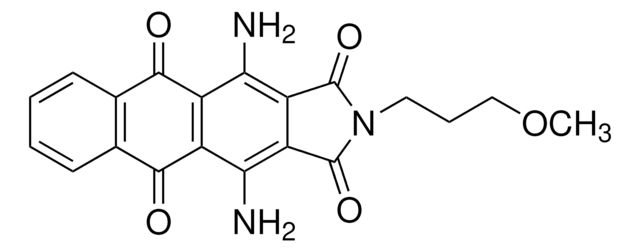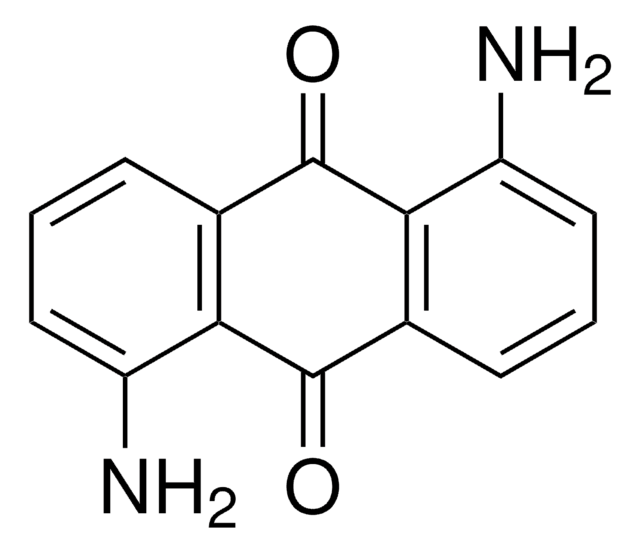215643
Disperse Blue 1
Dye content 30 %
Sinónimos:
1,4,5,8-Tetraaminoanthraquinone
About This Item
Productos recomendados
form
powder
composition
Dye content, 30%
mp
332 °C
solubility
1 M NH4OH: 10 mg/mL, opaque, blue
λmax
607 nm
application(s)
diagnostic assay manufacturing
hematology
histology
storage temp.
room temp
SMILES string
Nc1ccc(N)c2C(=O)c3c(N)ccc(N)c3C(=O)c12
InChI
1S/C14H12N4O2/c15-5-1-2-6(16)10-9(5)13(19)11-7(17)3-4-8(18)12(11)14(10)20/h1-4H,15-18H2
InChI key
JSFUMBWFPQSADC-UHFFFAOYSA-N
¿Está buscando productos similares? Visita Guía de comparación de productos
General description
signalword
Danger
hcodes
Hazard Classifications
Carc. 1B - Eye Dam. 1 - Skin Irrit. 2 - Skin Sens. 1
Storage Class
6.1C - Combustible acute toxic Cat.3 / toxic compounds or compounds which causing chronic effects
wgk_germany
WGK 3
flash_point_f
Not applicable
flash_point_c
Not applicable
ppe
Eyeshields, Faceshields, Gloves, type P3 (EN 143) respirator cartridges
Choose from one of the most recent versions:
Certificados de análisis (COA)
Don't see the Right Version?
If you require a particular version, you can look up a specific certificate by the Lot or Batch number.
¿Ya tiene este producto?
Encuentre la documentación para los productos que ha comprado recientemente en la Biblioteca de documentos.
Los clientes también vieron
Nuestro equipo de científicos tiene experiencia en todas las áreas de investigación: Ciencias de la vida, Ciencia de los materiales, Síntesis química, Cromatografía, Analítica y muchas otras.
Póngase en contacto con el Servicio técnico












